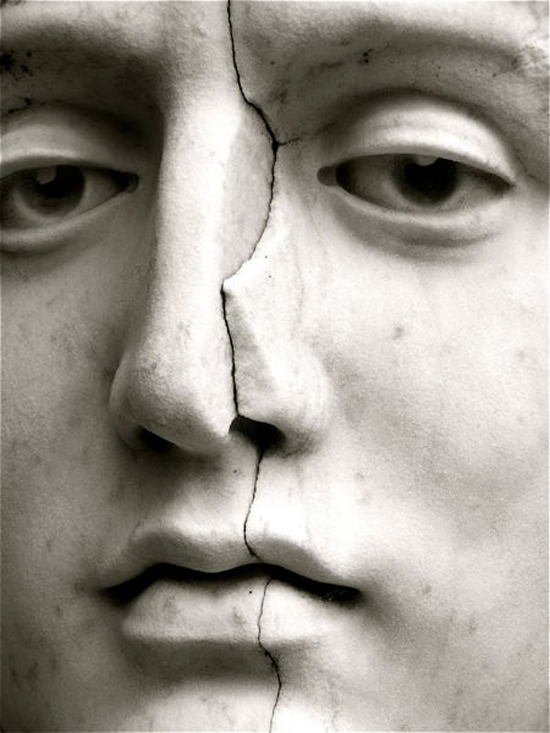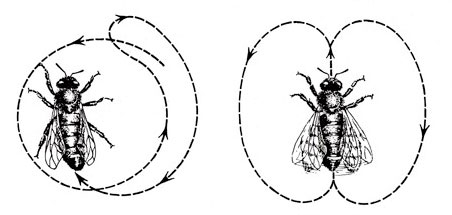This article continues an argument started in article #6 of this series, The Fictions We Create 6: Flawed diamonds —
description or evaluation?.
 Can *flawed* (in the sense that some items fall short of a proposed standard) and its antonym, *unflawed*, be viewed as descriptive terms? Both are used evaluatively and do not describe in the ordinary sense of that word (referring to features). We may talk about a diamond being “flawed” but mean that the gem has features which make it less than perfect. In the eyes of experts this may degrade its market value, but it does not determine whether the item belongs to the class of diamonds or is cut glass.
Can *flawed* (in the sense that some items fall short of a proposed standard) and its antonym, *unflawed*, be viewed as descriptive terms? Both are used evaluatively and do not describe in the ordinary sense of that word (referring to features). We may talk about a diamond being “flawed” but mean that the gem has features which make it less than perfect. In the eyes of experts this may degrade its market value, but it does not determine whether the item belongs to the class of diamonds or is cut glass.
Similarly, a farm chicken which has lost its feathers — it was plucked by one of us! — is still a bird, although it is the worse for receiving such uncharitable, cavalier treatment. My argument hopefully is clearly Aristotelean since it starts from the premise that a bird is an object which is defined by a finite list of qualities which make it “bird-like”, which give it bird-status! (This is not how modern biologists view species!)
Admittedly, although “definitions” may be useful tools for sorting a heap of bric-a-brac into smaller managable categories, definitions of names should not be confused with efforts to discover why each differs from others, or what makes a bird different from a rodent! Nor should this be confused with a search for explanations, e.g., why a bird is what it is (or seems to us), how differences between events (and objects) originally arose and have come about, or what caused — in the sense of created — a difference between events.
These questions are historical and therefore should be answered using primarily historical methods. It requires, inter alia, that answers state how different (specificable) states changed over time and circumstances, what it was that specifically promoted such changes. It is a case where we wish to have knowledge about circumstance (specific and in general) which give rise uniquely or in general to such changes, as when we comment that “this stone moved its position since I last saw it!”. The answer to this particular quesion may be “Someone deliberately moved the stone up the mountain” or “It must have fallen or have been washed down the hill during recent rains.” Note, however, that in both cases the question of its change of location was answered by referring to an outside (i.e. external) agent of change — and not by reference to an agent, like some property of “volition” which is assumed to be general to all stones (!) or perhaps only to those stones with special markings! (The stuff of fairly-tales, where apple-pits or stones can turn into genies!)
Historical methods would only indicate how we moved from one conception of a phenomenon to another conception, whereas “causal” methods supposedly focus on how things work or on how things have come to be what they seem to be. Aristotle — and other thinkers of his period, including his students — raised these and related issue partly because they were firmly convinced that “change” in anything, whether of type, or movement, or of contingent features, reflect an unstable universe, that is, an imperfect world, whereas human reason revealed that it was our immediate perceptions that were variable, not the world as such! This was a major metaphysical assumption to make, one he had taken from Plato. Thus, prototypes (ur-forms) were stable whereas much of what we experience was regarded as ephemeral, even as shadows of the “real”, as representations. It reflects a “metaphysical stance”, a position based on our reasoning about matters which are given to us a priori.
The distinction made in earlier blogs between terms which serve to describe features of things and those which are evaluations of a feature of a “thing”, are critical for two entirely different reasons:
(a) Descriptions are used to identify features of events. It is not claimed that these descriptons are complete, and therefore form an exhaustive list, or that these are ordered in importance, but only state that each belongs to a list of attributes ascribed to a named thing. These may include reference to its relative distinctiveness, as when someone mentions that parakeets are “green-feathered all over” or that “Henry VIII in old age was bloated” — an empirical assertion which could be falsified and thereby eliminated from the list of “essential attributes”.
(b) Evaluations used to compare features of events as these stand to each other on some common yardstick. A “flawed diamond” for example selects a quality of a particular stone but does so both in relation to other stones but also by reference to a “perfect” or “ideal” one.
Aristotle suggested that we require a comprehensive inventory of things before we can inquire into the nature of each. He emphasized that things have properties which identify them in two ways: as individual items but also as a member of a class. Thus a thing may be a sample of a class, or it may refer to the class itself. There is a class of “man” but there are also instances, like “Socrates”. A simple but dfferent example: shoes are protective foot wear used by men, women, and children and are produced in all sizes as well as for each class of humans!

 The complementary idea that the universe itself had flaws, that it is not perfect, has not been put forward by theologians. How would anyone find out whether this was true, or even reasonable? Assume, for example, that the “world”, or the “universe” was not flawed, but has detectable blemishes! This argument would be based on the premise that the initial forces of creation were faulty, or were deficient in some sense, that its most significant product, humans, were ill-designed — a view which has not found many, if any advocates! However, the notion that humans — or other creatures — were “designed”, is itself contentious and involves an odd use of the term *designed*. It raises the issue whether the term “designed” is appropriate when used in such a general, almost frivolous, and unrestricted manner. Is it not better to remove the use of the term “designed” from its traditional plinth?
The complementary idea that the universe itself had flaws, that it is not perfect, has not been put forward by theologians. How would anyone find out whether this was true, or even reasonable? Assume, for example, that the “world”, or the “universe” was not flawed, but has detectable blemishes! This argument would be based on the premise that the initial forces of creation were faulty, or were deficient in some sense, that its most significant product, humans, were ill-designed — a view which has not found many, if any advocates! However, the notion that humans — or other creatures — were “designed”, is itself contentious and involves an odd use of the term *designed*. It raises the issue whether the term “designed” is appropriate when used in such a general, almost frivolous, and unrestricted manner. Is it not better to remove the use of the term “designed” from its traditional plinth? An example often cited in the past was to the “language” of bees, a field of research associated with the work of Karl von Frisch (Nobel prize, 1973) and his discovery that bees inform members of their hive of the location of honey sources by a dance. Here an individual message has content, that is, it is about something, refers to some distinguishable happening or event which may be significant or important to communicants. Yet every message may only be a constituent of a wider language. A piercing cry may be a message — as may be a whimper — but it is not part of a language unless there are additional messages which supplement such singular cries.
An example often cited in the past was to the “language” of bees, a field of research associated with the work of Karl von Frisch (Nobel prize, 1973) and his discovery that bees inform members of their hive of the location of honey sources by a dance. Here an individual message has content, that is, it is about something, refers to some distinguishable happening or event which may be significant or important to communicants. Yet every message may only be a constituent of a wider language. A piercing cry may be a message — as may be a whimper — but it is not part of a language unless there are additional messages which supplement such singular cries.